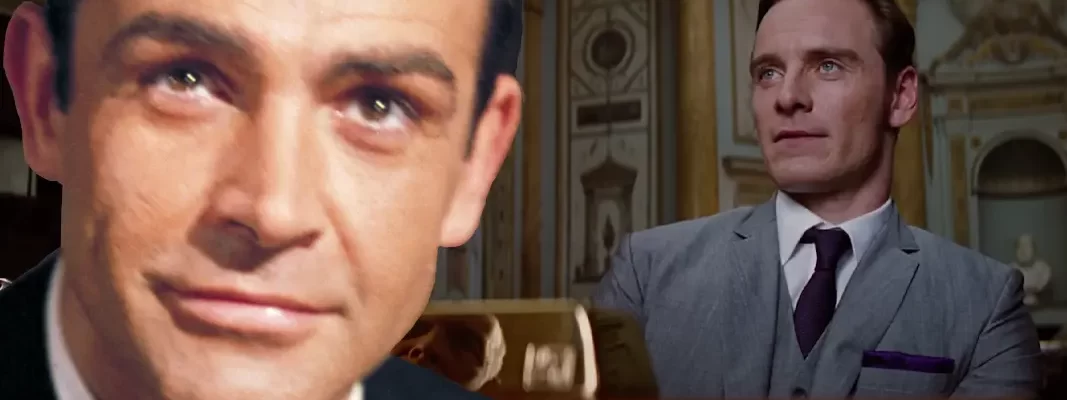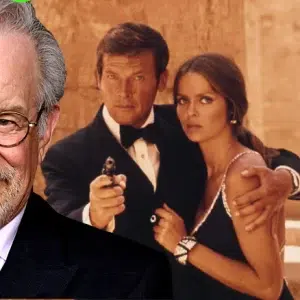9 Ways X-Men: First Class Is Based On 1960s James Bond Films
Matthew Vaughn has made numerous British spy films over the last ten years, most of which originate in comic books.
Kingsmen, The King’s Man, and his latest, Argylle all owe some debt to James Bond.
But Vaughn’s preoccupation with the Bond series began with his 2011 film, X-Men: First Class.
The movie was a reboot of the X-Men franchise showing the origin stories of both Professor X and Magneto and their first team-up in the 1960s against the backdrop of the Cold War.
During his interviews for the film in 2011, Vaughn told Hitflix:
“There are two main influences I had. First, I watched all the early Bond movies again.
“You Only Live Twice I watched a couple of times. I really wanted it to feel like a ’60s Bond film, but with a little bit of reality it could be grounded in.”
Indeed, the influences of ’60s Bond films are evident on a rewatch of X-Men: First Class.
Not just You Only Live Twice, but the X-Men: First Class also alludes to Goldfinger, Thunderball, and Live and Let Die. As we’ll see, Michael Fassbender deliberately channels Sean Connery in First Class.
The influences and references are numerous. So let’s begin.
1. A Super-villain Orchestrates a Showdown between Superpowers
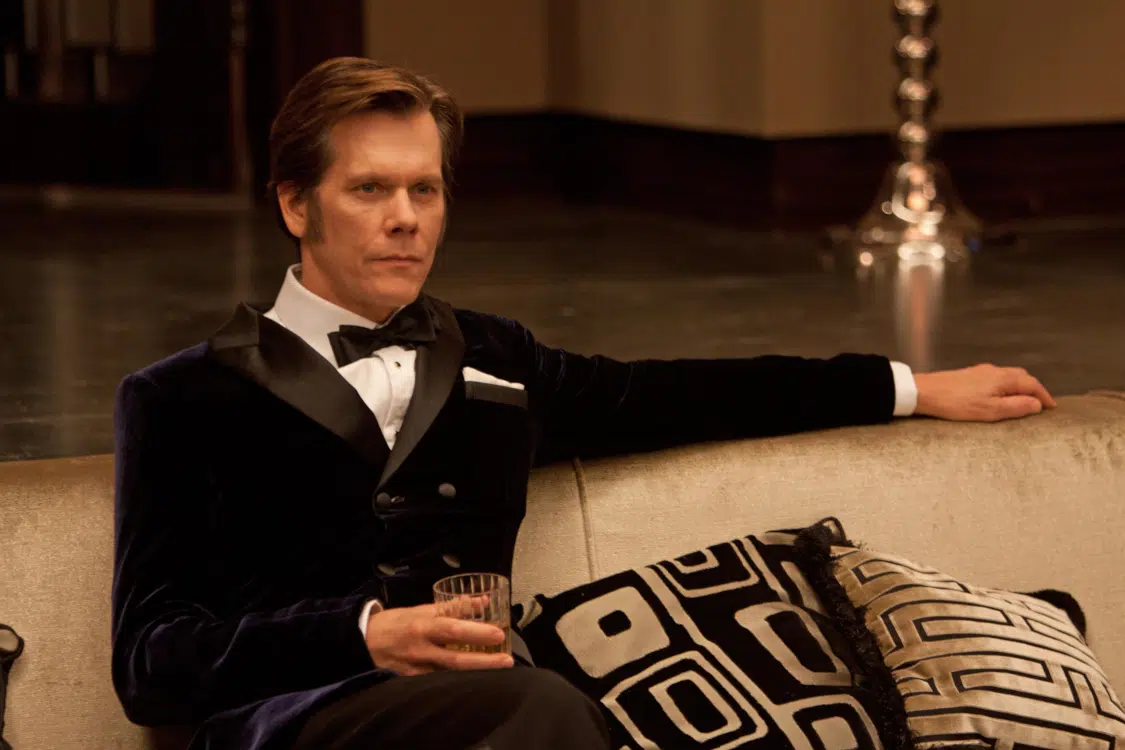
Image: Twentieth Century Fox via MovieStillsDB.com
Vaughn’s fondness for You Only Live Twice extends to the plot of X-Men: First Class. Like all classic ’60s Bond films, X-Men: First Class involves a supervillain playing superpowers against each other.
The plot is most similar to You Only Live Twice in which Bond’s arch-villain Ernst Stavro Blofeld wants to “orchestrate a little war” between Russia and America. The quest to start World War Three is a plot shared by Sebastian Shaw (Kevin Bacon) in X-Men: First Class.
“It was all about trying to create a nuclear war. So, You Only Live Twice was very influential on that,” Vaughn told Den of Geek.
Vaughn, however, uses the real Cuba Missile Crisis as the backdrop for the climax of First Class, as the X-Men must stop Shaw’s plans at the very last moment. A typical down-to-the-wire climax popularized by Bond films.
2. Professor X and Magneto Channel James Bond
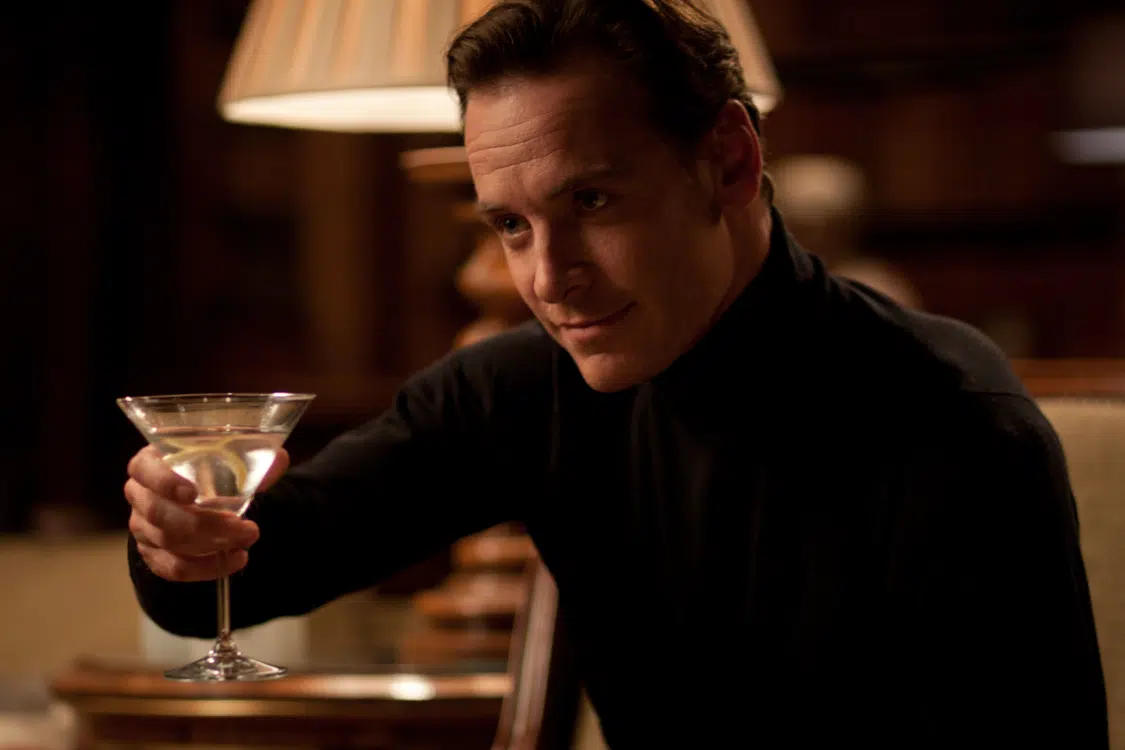
Image: Twentieth Century Fox via MovieStillsDB.com
Professor X flirts with a student at Oxford University, where he studies, and introduces himself as “Xavier. Charles Xavier.” It’s a nod to the most famous character introduction in cinema history (“Bond. James Bond”).
But the character who most channels James Bond is Magento (Michael Fassbender). I defy anyone not to see the similarity between the performances of Fassbender in the first half of the film and Sean Connery’s 007.
Fassbender even wears a nice three-piece grey suit that recalls a similar suit worn by Connery in Goldfinger. Later, he even drinks the iconic Vesper martini with lemon peel.
In fact, Vaughn didn’t want Fassbender to copy Ian McKellen, who played the older Magneto in earlier X-Men films. The director, instead, wanted the actor to copy Connery’s Bond, as Fassbender recalled:
“Matthew said, ‘You know, there’s something about this character that reminds me of an early Bond, a Sean Connery Bond from the ’60s.’ Connery had this unusual accent and voice and he heard similarities with my voice and we sort of went with that.”
Vaughn added in an interview with Den of Geek:
“I sat down with Michael, and I said, “You know, I’ve always wanted to do a Bond movie. Imagine you’re Bond, but you don’t have to use gadgets. You can do shit that other people can’t. You’re the ultimate assassin in the world that no one knows about.”
3. Magneto Shoots to Camera Like Bond’s Gunbarrel Logo
In the Argentinian bar scene, Erik has a gunshot to the camera like Bond’s shot through the gunbarrel in the opening frames of almost every Bond film.
“Oh, yeah. I sort of want the Broccolis to regret never hiring me. I love the Bond movies,” Vaugn told Den of Geek.
In the same interview, Vaughn said he’d loved to make a Bond film if Fassbender played 007.
4. Scantily-clad Women in High Heels.

Early Bond films often featured women in bikinis or lingerie and high heels in the most preposterous situations.
In keeping with the image of Kissy Suzuki scaling a volcano dressed in nothing but a bikini and high heels, Vaughn has a bevy of beauties all dressed in a similar manner entering the Hellfire Club.
At the film’s beginning, CIA agent Moira MacTaggart (Rose Byrne) strips down into her lingerie so she can get past the bouncers undetected.
4. The Hellfire Club has Secret Rooms Like The Boneyard Club in Live and Let Die
Agent MacTaggart sits at a table in a booth and turns a knob in the center of the table. Immediately, her table swivels through the wall of the booth and she enters secret rooms.
Something similar happens to Bond in Live and Let Die. Bond investigates Mr. Big’s The Boneyard Club in Harlem. He sits at a booth, which swivels behind the wall. He’s now face-to-face with Mr. Big, an alias for the film’s villain Dr. Kananga.
5. Bond Girls, Good and Bad

Image: Twentieth Century Fox via MovieStillsDB.com
While “Bond Girl” is a rather misogynistic epithet today, the name has stuck, nonetheless. Vaughn leans into earlier “Bond Girl” tropes in X-Men: First Class, especially with the typical pairing of the good Bond Girl and the femme fatale or bad Bond Girl.
The women, other than Mystique, have rather weak character development. Did Vaughn deliberately want to reflect the weak character development of Bond women in 1960s Bond films like You Only Live Twice? A case could be made.
Rose Byrne plays Moira MacTaggart, a CIA agent who, though intelligent in her own right, has little to do in X-Men: First Class after her infiltration of the Hell Fire Club. Vaughn makes fun of the attitudes toward women in the 1960s in one of the final scenes. Charles Xavier wipes Moira’s memory so she can’t reveal the X-Men’s identity to her superiors, and instead only remembers “trees”, “sunlight. And “a kiss”. The memory of “a kiss” triggers her boss who says: “Gentlemen, this is why the CIA is no place for a woman.”
That brings us to Emma Frost (played by January Jones). Much of the strength and power of the character in the comics is softened in the movie. Jones portrays Frost as a woman whose only function is to perform whatever Shaw wants her to do. She even cuts a piece of ice from an iceberg for Shaw’s drink.
It’s all meant to be tongue-in-cheek, of course. Jones still camps up her performance and is fun to watch. She happily leans into the bad Bond Girl trope of using sex as a weapon to achieve her objective.
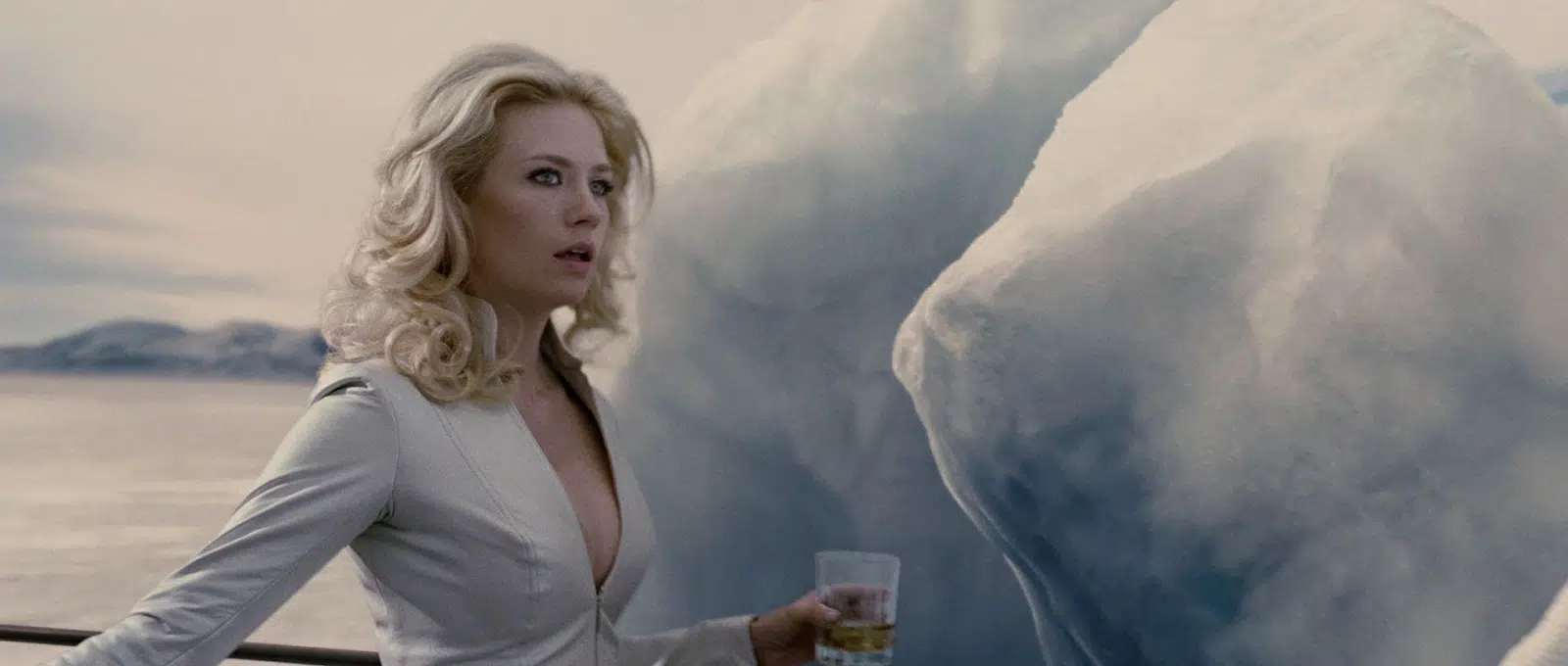
Image: Twentieth Century Fox via MovieStillsDB.com
6. Shaw’s submarine vs. M’s submarine in You Only Live Twice
Shaw has a submarine attached to the hull of his yacht. It recalls Emilio Largo’s trick yacht in Thunderball somewhat, with its hull that opens to let out submersibles. In addition, Shaw’s living room seems out of place for a submarine. Well, it has a precedent. Bond’s boss, M, had his own wood-paneled office – a recreation of his office in Whitehall – on board a Royal Navy submarine in You Only Live Twice.
7. Influence of Bond Production Designer Ken Adam
The submarine’s interior is just one piece of set design in First Class that pays homage to ’60s Bond films, especially the work of Ken Adam.
Adam, master of the Bond villain lairs, is responsible for most of the Bond film aesthetic. While Vaughn and his First Class production designer, Chris Seagers, don’t try to imitate the mesmerizing volcano base in You Only Live Twice (who could!), they are inspired by Adam’s cavernous and fantastical set design.
Nonetheless, the standout set design in First Class–the war room–isn’t even from Bond. Instead, it’s almost an exact copy of Adam’s war room in Stanley Kubrick’s Dr. Strangelove (1964), which won Adam the job as production designer on Goldfinger that same year.
Seagers combines Adam’s aesthetic while maintaining continuity with the production design of previous X-Men films. It all works so well, possibly because secret bases—all of them—whether in comic book movies or not, owe a lot to Ken Adam.
8. Soundtrack Inspired by Bond composer John Barry
Henry Jackman, who had worked with Vaughn since Kick Ass (2010), scored X-Men: First Class. The various 1960s pop and rock-infused tracks, especially the electric tones are inspired by John Barry, the Bond composer who established the Bond sound. Jackman described Barry’s music as “extremely posh pop music”, but he expresses that sound more in the ambient droning and electric wailing guitar sounds of Hans Zimmer. Zimmer, of course, would go on to score the latest Bond film, No Time to Die, and spoke candidly about the influence of John Barry on his music.
9. Title Sequence Inspired by Bond Titles Creator Maurice Binder
First Class ends with a neon-colored title sequence inspired by Maurice Binder’s early Bond title sequences, specifically from the first Bond film, Dr. No.
The end title sequence, designed by Simon Crow from Prologue, is a simple design reflecting the colored dots Binder used. The dots came from the opening Gunbarrel logo, a recurring motif in almost every Bond film to follow. A succession of dots appear across the screen before the last one opens up into the Gunbarrel logo. Bond strolls into view and turns and shoots and blood flows down the screen.
In Dr. No, the dots continue filling the screen with various patterns and colors. Crow took inspiration from this sequence. It’s no coincidence as First Class is set in 1962, when Dr. No was released.
Vaughn “wanted the title sequence to feel like it was set in the same time period as the movie,” Clowes told Watch The Titles. “…He emphasized the fact that it should feel like it was made in the 1960s and not like it was made now, trying to feel retro.”

